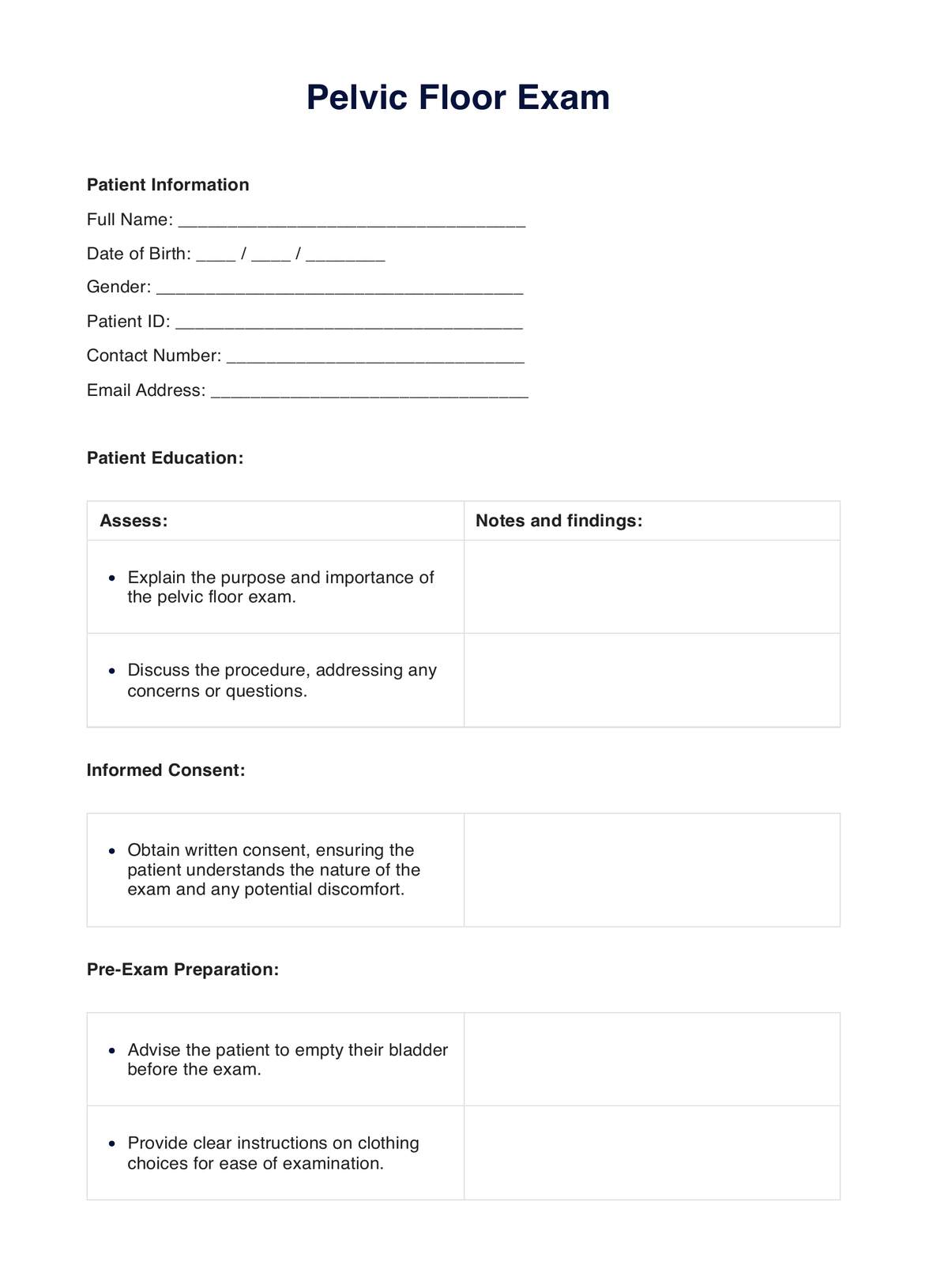A pelvic floor exam is a medical procedure that assesses the health and function of the pelvic floor muscles and associated structures. It is performed to diagnose and address conditions such as pelvic organ prolapse, urinary incontinence, and pelvic pain disorders.

Pelvic Floor Exam
Explore our pelvic floor exam guide for a comprehensive overview, including preparation, procedure insights, and understanding results. Your pelvic health matters!
Pelvic Floor Exam Template
Commonly asked questions
While some patients may experience mild discomfort, a pelvic floor exam is generally not painful. Clear communication with the healthcare provider is essential, and they can adjust their approach to ensure the patient's comfort during the examination.
The frequency of pelvic floor exams varies based on individual health needs and risk factors. For women, regular pelvic exams are often part of routine gynecological check-ups. Individuals experiencing pelvic health symptoms or conditions may require more frequent assessments, as determined by their healthcare provider.
EHR and practice management software
Get started for free
*No credit card required
Free
$0/usd
Unlimited clients
Telehealth
1GB of storage
Client portal text
Automated billing and online payments











